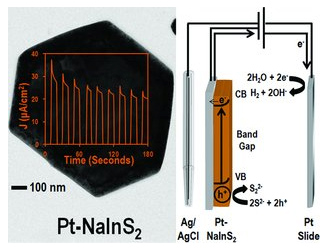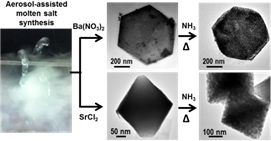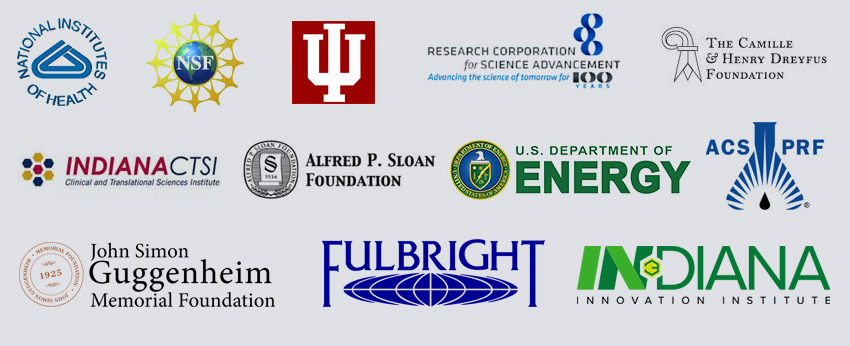New Materials for Photocatalysis
 Solar energy conversion represents the most viable means of sustainably producing 13 TW (consistent with global human demand). Photocatalytic water-splitting represents one way of using solar energy to convert a low value substance (water) into a useable fuel (hydrogen), with minimized environmental and political consequences. Spray pyrolysis provides access to the compositionally-complex materials that typify most modern photocatalysts.
Solar energy conversion represents the most viable means of sustainably producing 13 TW (consistent with global human demand). Photocatalytic water-splitting represents one way of using solar energy to convert a low value substance (water) into a useable fuel (hydrogen), with minimized environmental and political consequences. Spray pyrolysis provides access to the compositionally-complex materials that typify most modern photocatalysts.
We are currently using this synthetic technique to enhance the photocatalytic performance of valence band modified metal oxides and to study the shape-dependent photocatalytic properties of metal oxides. Advances in photocatalytic materials for solar water splitting can be directly applied to environmental remediation projects.
Funding provided by NSF-DMR (2016-2019) for "Spray Synthesis of Shape-Defined Nanocrystals", NSF-DMR CAREER Award (2010-2015) for "Advanced Aerosol Synthesis of Metal Oxides for Photocatalytic Applications" and by ACS-PRF (2009-2011) for "Electrospray Synthesis of Composite Photocatalysts with Controlled Architectures".
For a representative manuscript, please see:

Aerosol Synthesis of Shape-Controlled Template Particles: a Route to Ta3N5 Nanoplates and Octahedra as Photocatalysts
ARTICLE LINK Fu, J.; Skrabalak, S. E.* "Aerosol Synthesis of Shape-Controlled Template Particles: a Route to Ta3N5 Nanoplates and Octahedra as Photocatalysts" Journal of Materials Chemistry A, 2016, 4, 8451.


